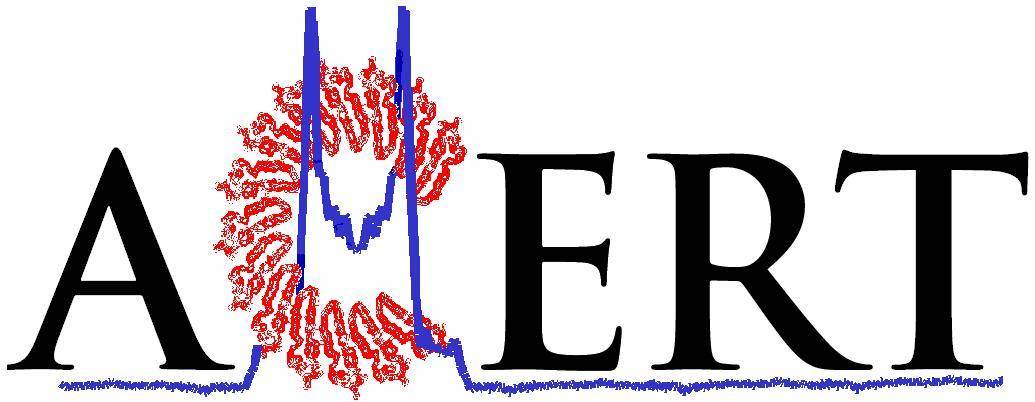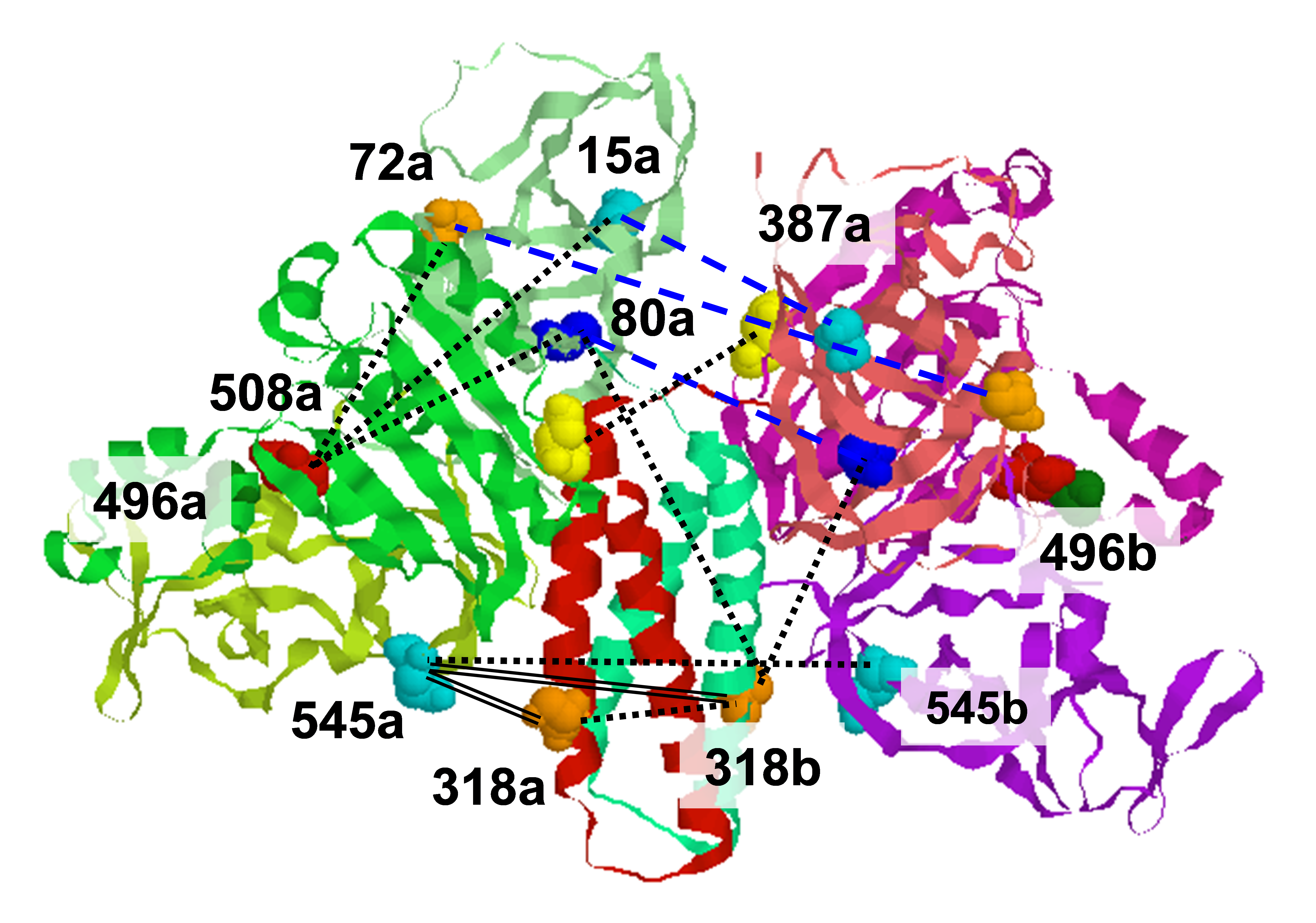.svg) National Institute of General Medical Sciences |
 |
 |
National Biomedical Resource for |
| ACERT's Service and Collaborative Projects | ||
Neurotransmitter release at the synapse requires membrane fusion. The SNARE complex, comprised of the plasma membrane t-SNAREs Syntaxin 1A and SNAP-25 and the vesicle v-SNARE synaptobrevin, mediates the fusion of two membranes (cf. upper Figure). Synaptic vesicles contain unusually high cholesterol, but the exact role of cholesterol in fusion is not known. In this study, cholesterol was found to stimulate SNARE-mediated lipid mixing of proteoliposome by a factor of five at a physiological concentration. Surprisingly, however, the stimulatory effect was much more pronounced when cholesterol was on the v-SNARE side than when it was on the t-SNARE side. Site-directed spin labeling and pulsed EPR revealed that cholesterol induces a substantial conformational change of the v-SNARE transmembrane domain (TMD) from an open scissor-like dimer to a parallel dimer (cf. lower Figure). When the TMD is forced to form a parallel dimer by the disulfide bond, the rate was stimulated 2.3-fold even without cholesterol, supporting the relevance of the open-to-closed conformational change to the fusion activity. The open scissor-like conformation may be unfavorable for fusion and cholesterol may relieve this inhibitory factor. This is illustrated in the upper figure showing a hypothetical model wherein in the absence of cholesterol (A), the open-scissors-like conformation may force the bilayer to have negative curvature, unfavorable for fusion. But, in the presence of cholesterol (B), the parallel conformation of the dimer may not harbor the unfavorable negative curvature. Publication: J. Tong, P.P Borbat, J.H. Freed, and Y.-K. Shin, Proc. Natl. Acad. Sci. U.S.A., 106, 5141-5146 (2009); PMC2663986 |
||
|
||
|
Jiansong Tong, (Department of Biochemistry, Biophysics and Molecular Biology, Iowa State University, Ames, Iowa 50011, USA) Peter P. Borbat, Jack H. Freed, (Department of Chemistry and Chemical Biology and the Advanced ESR Technology Center, B52 Baker Laboratory, Cornell University, Ithaca, New York, 14853, USA) Yeon-Kyun Shin (Department of Biochemistry, Biophysics and Molecular Biology, Iowa State University, Ames, Iowa 50011, USA) |
||
|
|
About ACERT Contact Us |
Research |
Outreach |
ACERT is supported by grant 1R24GM146107 from the National Institute of General Medical Sciences (NIGMS), part of the National Institutes of Health. |
|||||
| ||||||||